The Hunt
Home .The Hunt
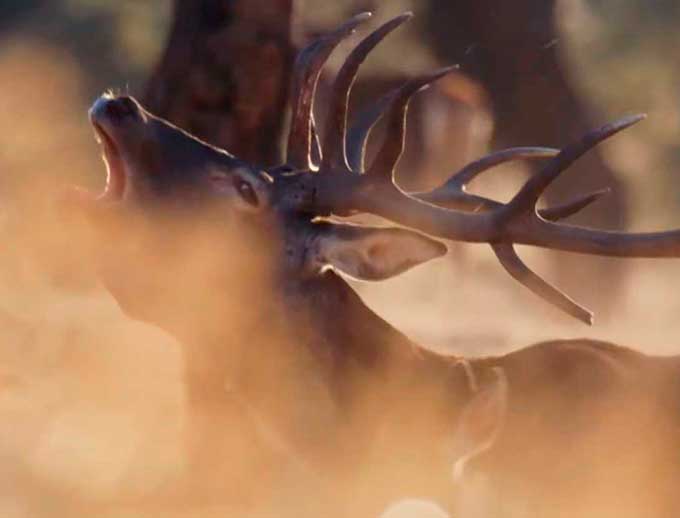
the hunt
Iberian Red Deer
Iberian Red Deer is a subspecies of the European Red Deer species. They are notably more athletic than their European counterparts and while they might have slightly smaller antlers they are still a magnificent trophy. The Iberian Red Stag can be hunted from August until February when they shed their antlers.
Season:
The Red Deer rut in the south of Spain typically starts in early September and runs until mid-October with the strongest part of the rut in the last week of September and first week of October. From the end of November many of the big stags retreat into the thicker and higher areas where we need to spend more time glassing for the right stags. The Red Deer can be comfortably hunted up until mid February when the males start to shed their antlers.
Hunting Method:
During this rut we have the option to hunt from blinds and waterpoints as well as the spot and stalk method. The ground is still very dry during the rut so spot and stalk with the bow becomes a real challenge but one that we manage to overcome. Our winter rains typically start falling in October, after the end of the rut so we change to primarily spot and stalk as the animals are moving a lot more looking for fresh grazing.
Areas:
The Iberian Red Deer will be hunted in our main finca El Encinarejo as well as neighboring properties on which we hunt. In total it is over 5000 hectares of hunting ground offering you an amazing hunting experience.
the hunt
Fallow Deer
Fallow Deer are not native to Spain and originally come from Asia where they were introduced as early as the 15th Century. They have however adapted perfectly to the Mediterranean climate and are now a thriving species in the Spain and across Europe.
Fallow Deer mostly prefer forest and meadow areas and can be found grazing non-stop through-out the day with very little rest in between. Fallow Deer can be hunted from August until February when they shed their antlers.
Season:
The fallow deer rut runs from late September until the end of October and makes for an amazing spectacle. The males generally join up with 4 or 5 females and there can often be more than one male per group. The added eyes of the females make the hunting trickier as they are constantly vigilant but this is one of the great challenges that makes Fallow Deer hunting so addictive. From December until the following rut the males separate from the groups and form bachelor herds in the thicker and higher areas.
Hunting Method:
Fallow Deer are notoriously skeptical of entering blinds or watering holes so the vast majority of our Fallow Deer hunting is done by spot and stalk. We do have a few blinds on main access routes that the Fallow Deer favor in case that is the preferred method of hunting.
Areas:
Fallow Deer will be hunted in our main finca El Encinarejo as well as neighboring properties on which we hunt. In total it is over 5000 hectares of hunting ground offering you a true hunting experience.
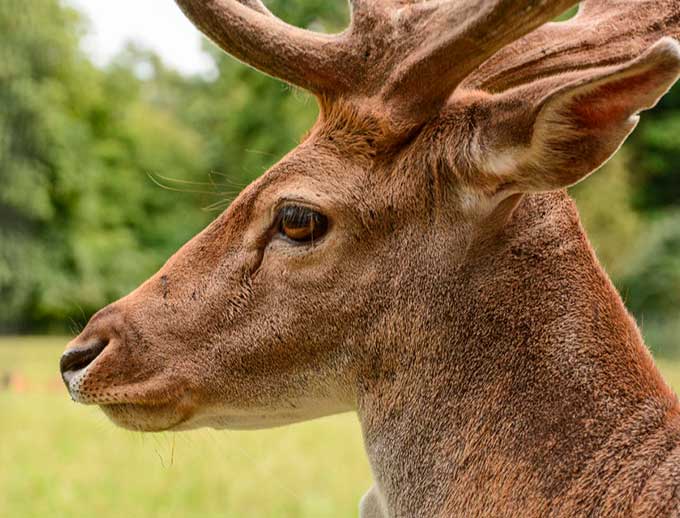
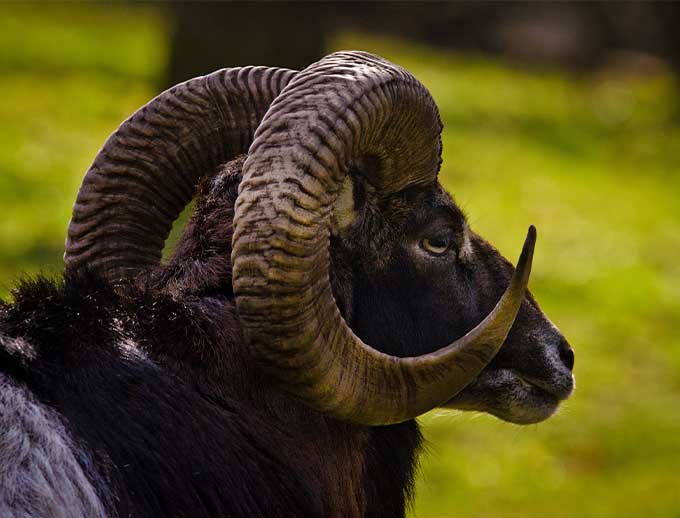
the hunt
Iberian Mouflon
The Iberian Mouflon is non-native species to Spain originating from the islands of Corsica and Sardinia in the late 19th Century. The Mouflon is a feral species of sheep that has become a famed hunting Species throughout Europe. Mouflon groups are generally led by a dominant ram and group sizes can vary from 4 animals to 20. The mouflon has exceptional eyesight and is a very alert animal making for a an amazing hunt.
Season:
Iberian Mouflon can be hunted all year around in Spain but the best time of the year is during their rut in November. Iberian Mouflon start rutting in the last week of October and will rut through to the end of November. March/April is another great time to hunt Mouflon rams and the Andalucian Spring landscape is a sight to behold adding that extra layer of enjoyment to the hunt.
Hunting Method:
Iberian Mouflon will primarily be hunted through the spot and stalk method as they are very wary animals and do not enter into blinds as easily as other species. We do however have some blinds installed at water points allowing us to bow hunt from blinds as well if that is your preference.
Areas:
Iberian Mouflon will be hunted on our neighboring properties to which we have access for hunting. These properties make up over 4000 hectares on which we can hunt thus making it a great hunting experience.
the hunt
Ibex
We offer exceptional free range mountain hunting of both the South Eastern as well as the Ronda Ibex, two of the four sub-species found in Spain.
Gredos Ibex:
The Gredos Ibex, along with the Beceite Ibex, is the largest of the subspecies found in the Iberian Peninsula and is characterized by its back-swept horns and very dark coat. The Gredos Ibex derives its name from the fact that they are found in the Gredos mountain ranges west of Madrid. The hunting area covers thousands of hectares and ranges from 4900 feet up to 8500 feet in altitude.
The hunting season runs from October to May with the Rut starting in November. The best time to hunt Gredos Ibex is during the months of November/December and March/April. The Sierra de Gredos falls in the province of Castile-Leon where you will encounter a rich cultural experience that is well worth exploring more deeply. We have hunting grounds close by for Red Stag, Fallow and Mouflon in case you finish your hunt earlier than expected and wish to continue hunting.
Beceite Ibex:
The Beceite Ibex, along with the Gredos, is the largest horned sub-species in the Iberian Peninsula. The Beceite Ibex also has the largest range of all of the subspecies, spanning across multiple provinces and regions in Spain. The horns of Beceite Ibex are characteristically wide and tend to resemble the wings of an airplane. The males can grow up to 110kg and stand 80cm in the shoulder.
The hunting season runs from October to May with the Rut starting in late November/Early December depending on the cold. The hunting area ranges from 3000 feet to 6500 feet in altitude. The best time to hunt Beceite Ibex is December and March/April. Our hunting area is within close proximity to Valencia where one can enjoy a great few days taking in the culture and cuisine. From a culinary point of view Valencia is famous for their Paella as well as world-class wines grown in the area.
South Eastern Ibex:
The South Eastern Ibex, also know as the Sierra Nevada Ibex, is the third biggest Ibex species in Spain and is lighter in color than the Beceite and Gredos Ibex. The South Eastern Ibex is hunted in the Sierra Nevada mountain range in the Region of Granada, with altitudes reaching up to 9000 feet making it the highest mountain range in Spain.
The Ibex season opens on the 15th of October and runs until the 31st of May making it the perfect species to combine with a Stag, Fallow or Mouflon hunt. The rut for the South Eastern Ibex starts in November and runs through December.
This hunt is feasible for most hunters due to the large amount of dirt roads available in the mountain range, although it is the highest mountain range in Spain, it is an option for all. South Eastern Ibex can be hunted as close as 1,5hours from the finca making it the ideal species for a day excursion during the rut.
Ronda Ibex:
Ronda Ibex are the smallest of the 4 Spanish Ibex and are a very isolated subspecies. There is a very low density of Ronda Ibex therefore making it challenge to hunt a big trophy and even more rewarding when you find one. The Ronda ibex is found in the Province of Malaga in the Limestone cliffs of the Ronda Mountain Range. The Ronda Mountain range is 4000 feet high but has limited access by road so there will be moderate hiking involved.
The Ibex season opens on the 15th of October and runs until the 30th April thus it is the perfect species to combine with a Stag, Fallow or Mouflon hunt. The rut for the Ronda Ibex starts in November and runs through December.
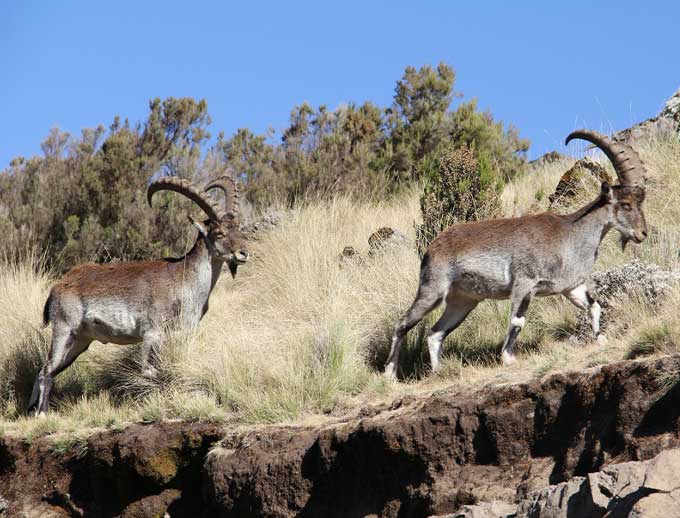
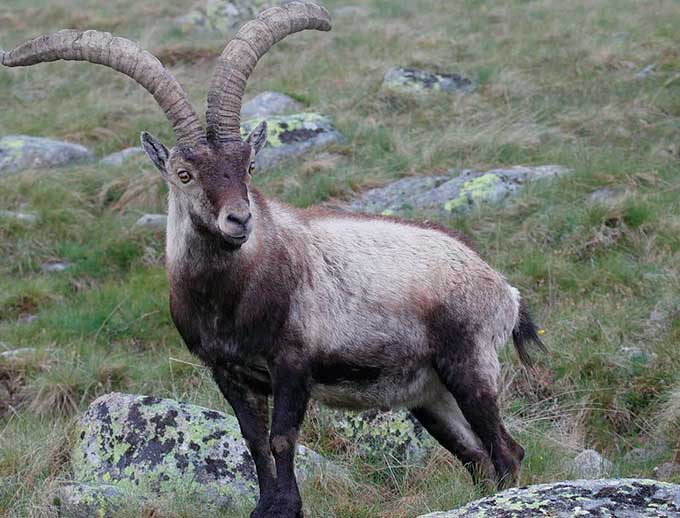
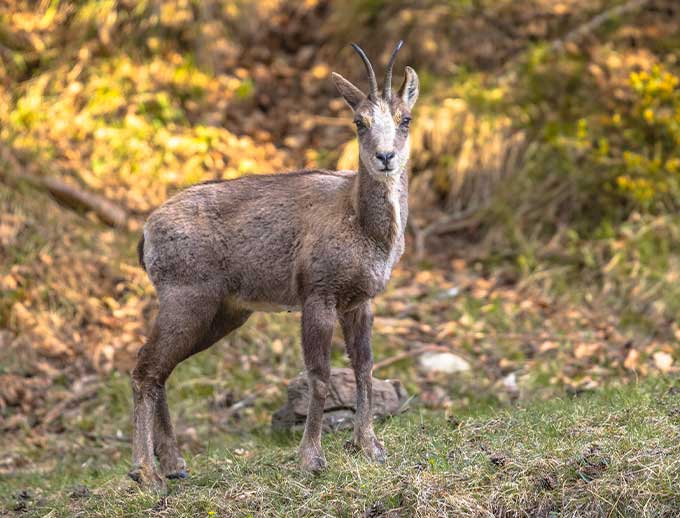
the hunt
Chamois
There are two Chamois subspecies in Spain namely the Cantabrian Chamois and the Pyrenean Chamois. The Chamois can be considered a true mountain species and can often be found at the very highest peaks of the mountain ranges. Both male and female chamois have horns and although a females horns can often reach the same lengths of a males, it is often not as thick and heavy. Chamois are small and nimble animals often only reaching a maximum of 30kg they are designed for the mountains. There incredible eye-sight makes hunting them a true challenge.
Season:
The Cantabrian Chamois season in our Asturian area runs from the 1st of April until the 1st November and then again from the 26th November until the 28th of February. In our Leon area the season runs from 1st of May until the 15th of July and then from the 1st of September until the 15th of November. The rut generally happens in late October making this an ideal time hunt this amazing species.
The Pyrenean Chamois season runs from the 18th of April until the 1st of July and then from the 1st of September until the 13th of December. The Pyrenean chamois rut is similar to that of the Cantabrian Chamois and the best time would be throughout November.
Area:
We hunt our Cantabrian Chamois in the Leon and Asturian part of the Cantabrian mountains where the jaw-dropping landscape in enough of a reason to get into the mountains. The Cantabrian Chamois share there area with the Iberian bear as well as the Iberian Wolf making this not only a thrilling hunt but an incredible opportunity to experience these species.
Our Pyrenean Chamois are hunted in two different areas depending on the physical difficulty level that our hunters prefer. In Girona the landscape is less harsh than in other areas and this allows most people of a reasonable physical level to hunt good quality animals. Our other hunting area in Huesca is more of the typical Chamois country with long climbs and a harsher environment.
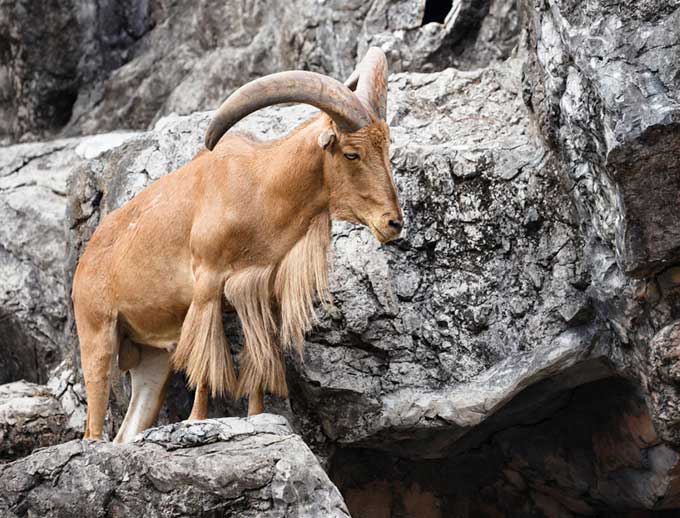
the hunt
Arrui (Barbary Sheep)
Hunting Arrui in the mountains of Alicante is a unique experience as good as any other mountain hunting you could do. Arrui are an intermediate species between a sheep and goat and originate from the Barbary coast of Africa. They were introduced to the Iberian Peninsula in the early 70’s as an attempt to add another hunting species. The Arrui is characterized by having a long mane down its chest and the front of their legs. They have wide looping horns similar to that of the Mouflon.
Season:
Arrui males can be hunted in the general season between October and the end of January while females can be hunted all year around. Both males and females have horns although the males often weigh double that of a female. A large male is easy to spot in a group and even though the females can sometimes have equally as long horns, the horns do not carry the same weight as the males.
Area:
Our hunting area in Alicante is free range and mountainous with an altitude high of 4200 feet. The mountain range has very little road access so hiking is imperative to success. The Arrui has incredible eyesight and a keen nose making it an exciting challenge, especially with the bow. Alicante is 5 hours from the finca so we will stay in local hotels. A minimum of two days with rifle is recommended and three days with the bow.
the hunt
South Africa
Encinarejo Outfitters operates in South Africa mainly in the provinces of Limpopo, Eastern Cape and Northern Cape. Having grown up in South Africa and cutting their teeth in the hunting industry there, Alex and Jess have made many connections in the industry and now have access to some of the top hunting grounds in the country. From Limpopo plains games to chasing Vaal Rheebok across tens of thousands of hectares of mountains in the Eastern Cape, Encinarejo Outfitters has it all to offer and at the best rates.
Enquire below to get our South African rates and prices.
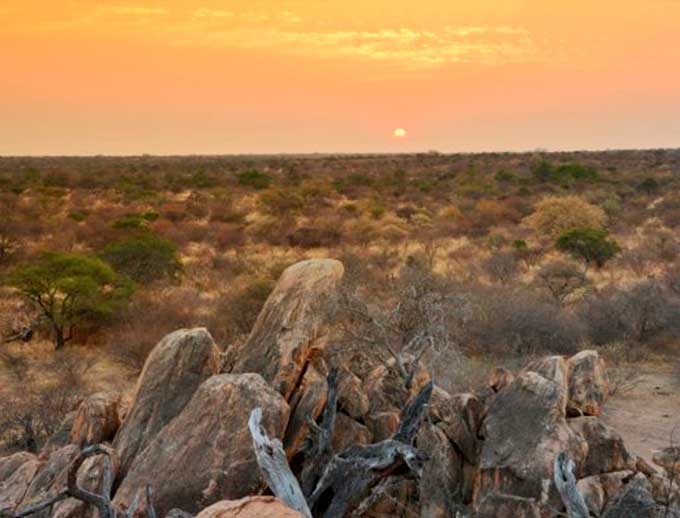
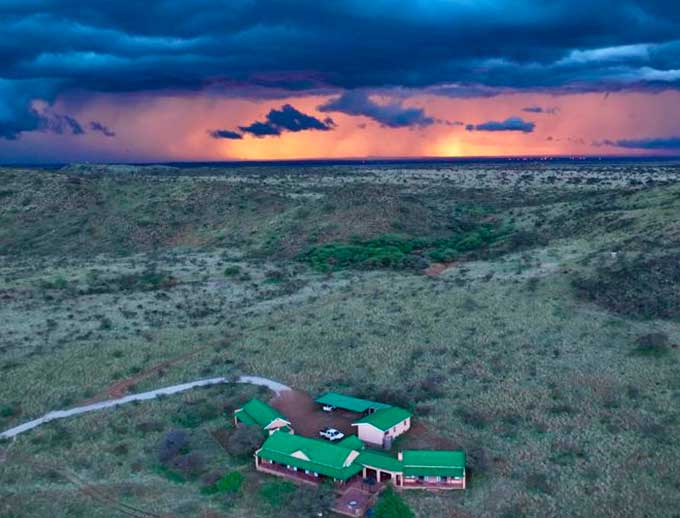
the hunt
Africa
Encinarejo Outfitters not only operates in South Africa but also across all of the major hunting countries of Africa. Our partnerships in Africa allow us to hunt each species in their ideal environment offering you the best opportunity on the trophy of a lifetime. Our diverse range of luxury camps offer you and your guests all the comfort and five star service that one could ask for. Our tailor-made safaris are guaranteed to result in the experience of a lifetime.
